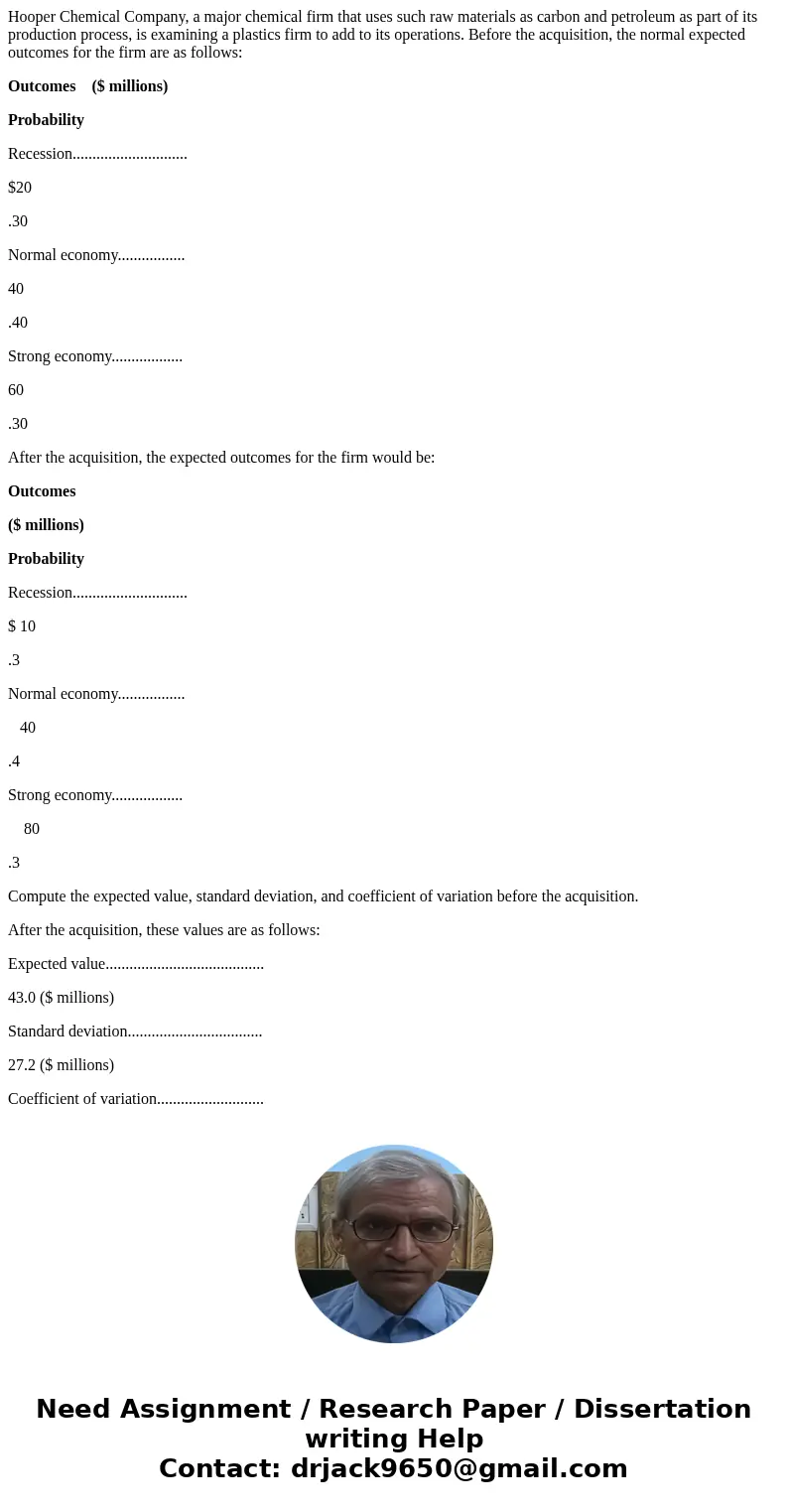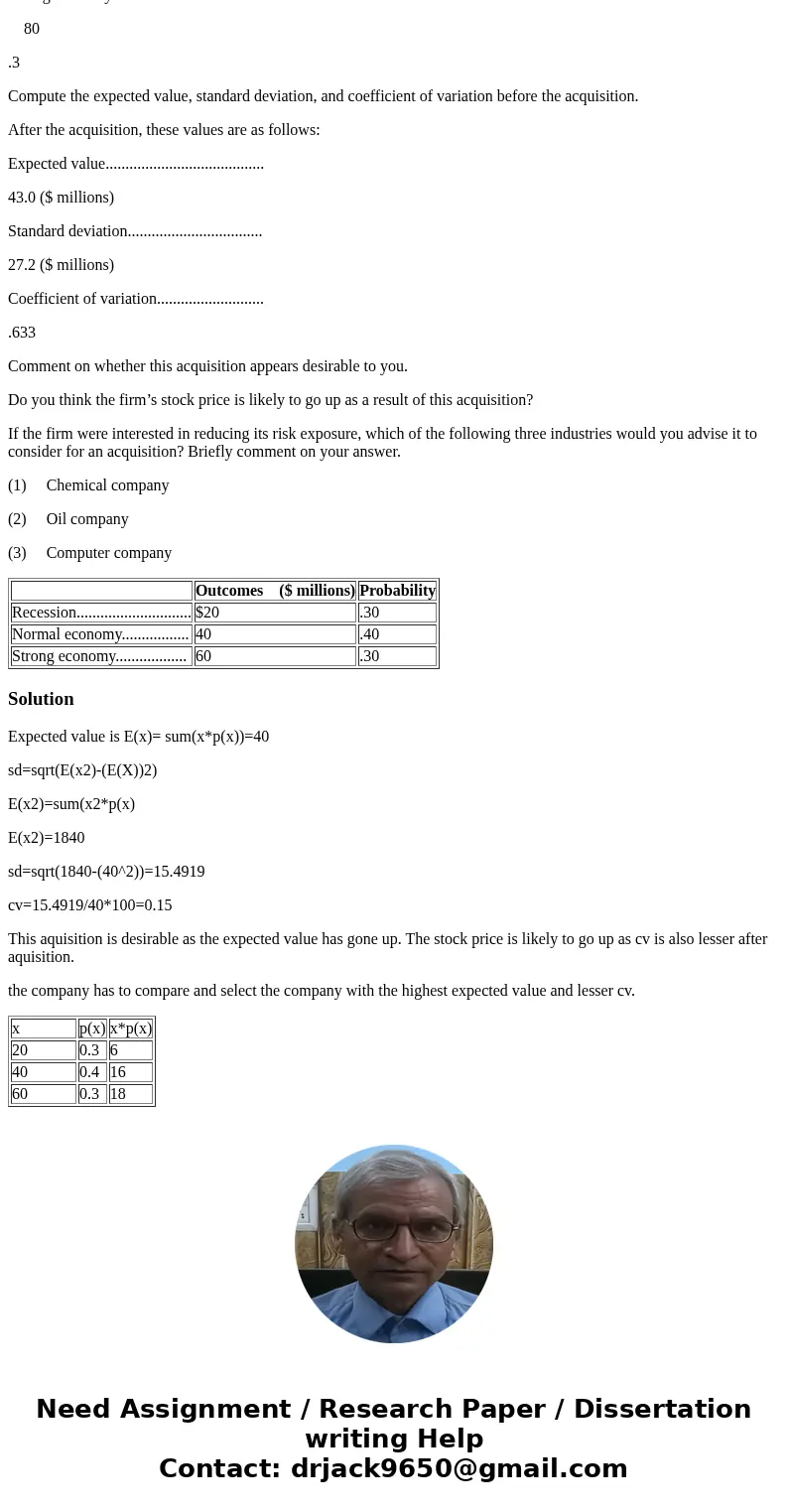Hooper Chemical Company a major chemical firm that uses such
Hooper Chemical Company, a major chemical firm that uses such raw materials as carbon and petroleum as part of its production process, is examining a plastics firm to add to its operations. Before the acquisition, the normal expected outcomes for the firm are as follows:
Outcomes ($ millions)
Probability
Recession.............................
$20
.30
Normal economy.................
40
.40
Strong economy..................
60
.30
After the acquisition, the expected outcomes for the firm would be:
Outcomes
($ millions)
Probability
Recession.............................
$ 10
.3
Normal economy.................
40
.4
Strong economy..................
80
.3
Compute the expected value, standard deviation, and coefficient of variation before the acquisition.
After the acquisition, these values are as follows:
Expected value........................................
43.0 ($ millions)
Standard deviation..................................
27.2 ($ millions)
Coefficient of variation...........................
.633
Comment on whether this acquisition appears desirable to you.
Do you think the firm’s stock price is likely to go up as a result of this acquisition?
If the firm were interested in reducing its risk exposure, which of the following three industries would you advise it to consider for an acquisition? Briefly comment on your answer.
(1) Chemical company
(2) Oil company
(3) Computer company
| Outcomes ($ millions) | Probability | |
| Recession............................. | $20 | .30 |
| Normal economy................. | 40 | .40 |
| Strong economy.................. | 60 | .30 |
Solution
Expected value is E(x)= sum(x*p(x))=40
sd=sqrt(E(x2)-(E(X))2)
E(x2)=sum(x2*p(x)
E(x2)=1840
sd=sqrt(1840-(40^2))=15.4919
cv=15.4919/40*100=0.15
This aquisition is desirable as the expected value has gone up. The stock price is likely to go up as cv is also lesser after aquisition.
the company has to compare and select the company with the highest expected value and lesser cv.
| x | p(x) | x*p(x) |
| 20 | 0.3 | 6 |
| 40 | 0.4 | 16 |
| 60 | 0.3 | 18 |


 Homework Sourse
Homework Sourse